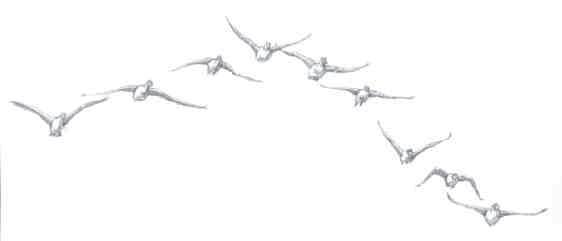
2 minute read
Pink-footed Goose records....................................................Nigel Odin
Pink-footed Goose records at Landguard
Whilst recording at Landguard Bird Observatory began formally from its inception in 1982, it had been going on for many years prior to this. Despite all of these observations, the first site record of Pink-footed Goose was not until one was found walking around the beach of the aggregate yard on April 3rd 1995.
Due to its tameness this was suspected of being an escapee. Not an auspicious start, though a flock of 12 on October 20th of the same year was a much more acceptable addition to the Landguard list. Since then the number of annual sightings has ranged from zero to three until a sharper rise in 2011 (see table below).
Now a Landguardregular Sightings have become annual in the past ten years. There are two January records of 36 on January 22nd 2008 and two north followed about an hour later by two south (which may, or may not have been the same birds) on January 26th of the same year. Four spring records are in the period March 7th to April 9th in 2000 and 2002 plus another spring one on May 3rd 2004. This last had missing flight feathers and was presumably a bird injured by a wildfowler. The
Table 1: Number of records & the total number of Pink-footed Geese recorded annually at Landguard Bird Observatory
Year
1995 1996 1997 1998 1999 2000 2001 2002 2003 Records 2 0 3 0 0 2 0 2 0 Total 13 0 61 0 0 19 0 4 0
Year
2004 2005 2006 2007 2008 2009 2010 2011 Records 2 1 2 2 3 2 3 7 Total 27 3 16 8 48 42 15 52 rest of the records are in the period September 25th to November 14th, with the largest flock on record being 35 on October 27th 1997. Records of flocks are mostly in the autumn and are of birds going in a northerly direction. These are presumed to be part of the vast numbers now wintering in Norfolk that have overshot their wintering grounds and are relocating back to their intended destination. Smaller numbers of birds can be seen to be going either in a northerly or southerly direction, with singletons normally mixed in with flocks of Brent Geese or other wildfowl; these were presumably lost waifs tagging onto others for company.
Increasing records This mirrors the general increase in records in Suffolk in recent years. Just using the Suffolk Bird Reports covering the years 1980 (Moore 1981), 1990 (Piotrowski 1991), 2000 (Lowe 2002) and 2010 (Mason 2011) as examples to illustrate this increase produces the following approximate totals (Table 2):
Table 2: Approximate numbers of Pink-footed Geese recorded in Suffolk
Year Total
1980 c.35 1990 c.35 2000 c.36 2010 c.4000
Steve Piotrowski in “The Birds ofSuffolk” summarises the history of this species and gives it a status at the time of writing as “An uncommon winter visitor and passage migrant” . This was clearly the case at that time. The Suffolk Bird Report covering the year 2000 also gives the same status. The more recent increase in numbers has yet to be reflected in the status given in the most recent reports.
Twopopulations The British wintering population has trebled in size over the last thirty years and originates








